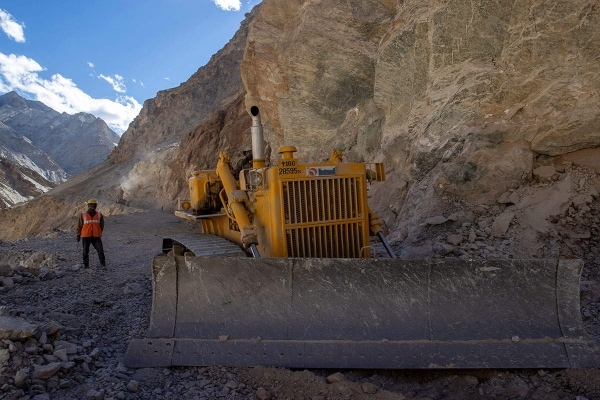Treacherous task of constructing roads at higher elevation
But unlike our neighbours, abandonment is not something India relates with. We need our roads and highways in the hills because we need our people to stay connected with us.
Total Views |
India has a complex terrain. Therefore, planning roads connecting various parts of the country with such diverse physical features becomes a treacherous task. And executing those plans becomes even more treacherous. Among the varied terrain, if there is one particular terrain that becomes absolutely challenging during constructing roads, then it clearly is the hilly terrain or higher elevation terrain. Constructing roads at higher elevations in India becomes even more challenging, especially because of the Himalayas.

There are several aspects that are considered in terms on engineering, while constructing a road. There are certain additional aspects that the govt considers while planning and approving any infrastructural plan, especially, roads. It becomes even more important to construct roads in the Himalayan region and keep it well connected with mainstream India, especially when we have neighbours like China and Pakistan. When it comes to roads in higher elevation, the additional critical element that is crucial in infrastructural planning is mainly the cold and dry weather there and its effective corrosion of the roads. More importantly, in case of the Himalayas, what becomes the biggest concern is the highly active tectonic zone that corresponds across the ranges. To understand what exactly is the severity of this concern, we need to understand the topography of the Himalayas.
Himalayas, as they are well known, are the youngest mountain range of not only India, but the entire world. That is why, it is still in making. The Himalayas have been formed with the collision of two tectonic plates resulting into massive folds that we call 'the Himalayas' today. Being the youngest, the action of collision of the two plates is still in progress, making landslides, earthquakes, avalanches a usual thing across the Himalayas. The same phenomena makes it difficult to construct roads across the Himalayan region. Additionally, even after successful construction of roads in this region, it becomes even more difficult to protect the infrastructure from the damage that is caused because of such destructive tectonic activities.
This is precisely one of the most important reasons why in terms of infrastructure development, the Himalayan region has remained disconnected from the rest of the country. However, the region is an integral part of the country, the people living the region are integral for the nation and none of the two can be abandoned for such reasons. Besides, India took long time, to learn lessons about China and Pakistan's land grabbing strategy, particularly China, whose forced infrastructure development projects were their trump card. The present govt, thus, has addressed the issue in its agenda and Himalayan infrastructure development projects have geared up in the recent years.
In terms of engineering, Motor, Bridle and Village are the three basic categories of hill roads. In easier terms, the roads that are suitable for all types of traffic and have one or more lane width are 'Motor' roads. These are the heart of communication in hilly regions. Bridle paths, on the other hand, are the main roads for pedestrian traffic and are used by pedestrians as well as mule traffic. These are important as they serve as feeder roads to motor roads. The village paths act as a connector between villages and other important areas in hilly regions. Hence, motor roads remain to be on the forefront of any infrastructure plan for a developing country.
In India, if we try to google about the infrastructure projects, particularly roads and tunnels, that are taking place in the Himalayan region all you be left reading about is how executing such projects is a blunder and how we need to stop them right away. But the most fundamental thought will bring you back to the right path that if these projects, are not undertaken just because of the fact that the region is seismically sensitive then we will be abandoning almost 3 Crore Indians that are residing in the Himalayas; the immense resources that the Himalayas has to provide us. But unlike our neighbours, abandonment is not something India relates with. We need our roads and highways in the hills because we need our people to stay connected with us.


